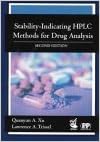Procedure for Assessing the Impact of Light Exposure on Drug Products
1) Purpose
The purpose of this SOP is to provide a standardized procedure for evaluating the impact of light exposure on the stability of drug products. This assessment helps in determining suitable packaging and storage conditions to prevent degradation due to light.
2) Scope
This SOP applies to all drug products that require light exposure testing to ensure they maintain their quality, safety, and efficacy during their shelf life. It is relevant for personnel in quality control, research and development, and
3) Responsibilities
The responsibilities for evaluating the impact of light exposure on drug products are as follows:
- Quality Control Team: To conduct photostability tests as per the protocol and document results.
- R&D Team: To design the photostability study protocol and provide technical support.
- Regulatory Affairs Team: To ensure compliance with regulatory guidelines during light exposure testing.
- Stability Study Coordinator: To manage testing schedules, sample management, and data analysis.
4) Procedure
The detailed stepwise procedure for evaluating the impact of light exposure on drug products is outlined below:
- Preparation of Photostability Study Protocol:
- 4.1 Define the purpose, scope, and objective of the light exposure study.
- 4.2 Identify the drug product and critical quality attributes (CQAs) to be monitored (e.g., color, potency, degradation products).
- 4.3 Determine the light conditions to be tested (e.g., UV and visible light exposure).
- 4.4 Establish the time points for testing under each light exposure condition (e.g., 0, 1, 3, 6 months).
- 4.5 Develop a protocol outlining procedures, equipment, and materials required for testing.
- Sample Preparation and Storage:
- 4.6 Select representative samples of the drug product for testing.
- 4.7 Package samples in transparent containers to simulate light exposure conditions.
- 4.8 Expose samples to specified light conditions in a photostability chamber.
- Testing and Monitoring:
- 4.9 Retrieve samples at specified time points and perform the required tests (e.g., assay, degradation products, dissolution).
- 4.10 Record all test results in a photostability testing log sheet.
- 4.11 Evaluate the results against predefined acceptance criteria.
- Data Analysis and Interpretation:
- 4.12 Analyze the data to identify any trends or deviations due to light exposure.
- 4.13 Determine the impact of light on the stability of the drug product.
- 4.14 Document any significant findings or trends in the data.
- Documentation and Reporting:
- 4.15 Compile a comprehensive photostability study report including objectives, methods, results, and conclusions.
- 4.16 Ensure the report is reviewed and approved by relevant stakeholders.
- 4.17 Submit the report to regulatory bodies or internal stakeholders as required.
- Review and Update:
- 4.18 Regularly review the photostability study protocol and update it based on new data or regulatory changes.
- 4.19 Archive the approved protocol and report in a controlled document management system.
5) Abbreviations, if any
- CQA: Critical Quality Attribute
6) Documents, if any
- Photostability Study Protocol
- Photostability Testing Log Sheets
- Photostability Study Report Template
7) Reference, if any
- ICH Q1B: Photostability Testing of New Drug Substances and Products
8) SOP Version
Version 1.0
